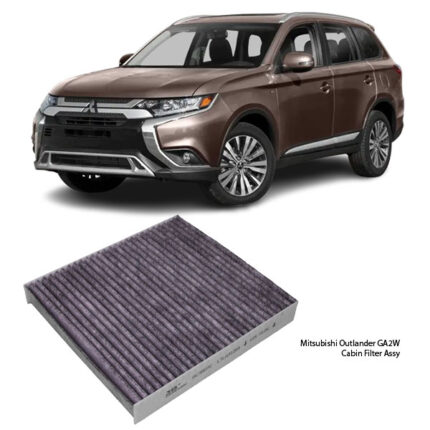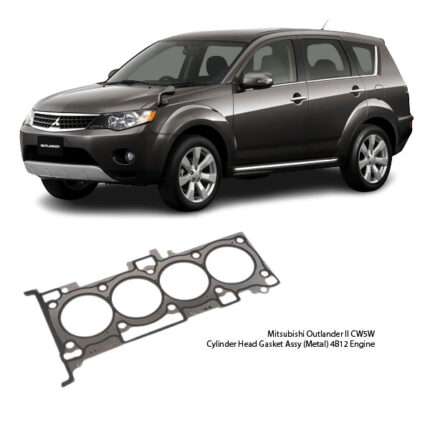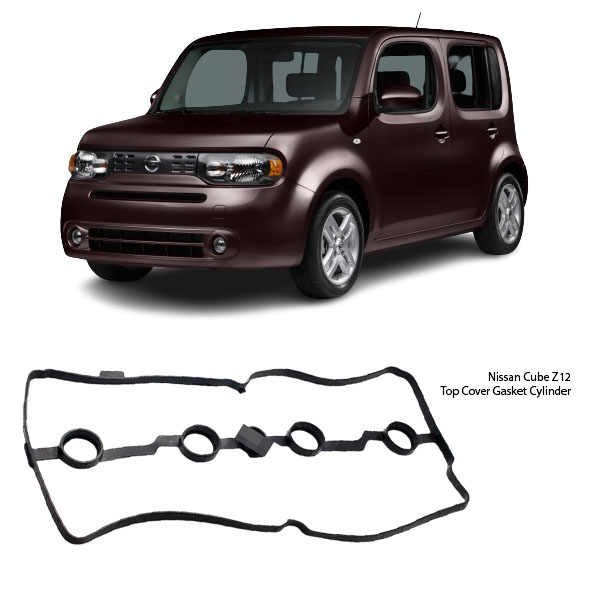Get Nissan Cube Top Cover Gasket Cylinder 13270-EN200 in Kenya
The Top Cover Gasket, also known as the Rocker Cover Gasket or Valve Cover Gasket, is a sealing component located between the engine’s top cover (commonly called the valve cover) and the cylinder head. It is part of a larger assembly that seals the upper section of the engine, where the camshafts, rocker arms, and valves are located.
This gasket prevents oil from leaking out of the top portion of the engine and stops contaminants like dust, dirt, and moisture from entering the engine. In many cases, the term “Top Cover Gasket Assembly” refers to the gasket itself along with related components such as grommets or seals that ensure a secure and leak-free fit around bolts and cover edges.
The gasket is usually made from rubber, silicone, or a composite material, engineered to withstand high temperatures, oil exposure, and engine vibrations.
Importance of a Properly Functioning Top Cover Gasket
While it may seem like a small component, the top cover gasket assembly plays a significant role in the overall health and performance of the engine. A well-installed and intact gasket offers several key benefits:
1. Oil Leak Prevention
The primary role of the top cover gasket is to prevent engine oil from leaking out of the valve cover. Engine oil is vital for lubricating the camshaft and other valve train components. A good gasket ensures this lubrication stays contained, reducing the risk of oil starvation and mechanical wear.
2. Maintains Engine Cleanliness
By containing oil and preventing leaks, the gasket helps keep the engine bay clean. Leaking oil can attract dust and debris, which can accumulate on the engine and cause insulation or overheating issues. A clean engine runs more efficiently and is easier to maintain.
3. Protects Internal Components
The gasket forms a seal that keeps out dirt, moisture, and other contaminants that could enter the engine through the valve cover area. These foreign elements can degrade internal engine parts and reduce engine life.
4. Reduces Odors and Smoke
A leaking top cover gasket often results in oil dripping onto hot engine parts like the exhaust manifold. This can cause smoke and a burning oil smell. A good gasket eliminates these issues, providing a safer and more comfortable operating environment.
5. Prevents Misfires
In some cases, leaking oil from the valve cover area may seep into spark plug wells, causing misfires and poor ignition performance. This can lead to decreased fuel economy, rough engine running, and even engine warning lights. A good seal keeps the ignition system dry and functioning correctly.
Consequences of a Faulty Top Cover Gasket Assembly
When the top cover gasket begins to fail due to age, wear, improper installation, or extreme conditions, a range of problems can occur. Some of the common issues caused by a faulty or worn-out gasket include:
1. Oil Leaks
The most immediate and noticeable symptom is oil seeping out from the valve cover joint. This may manifest as oil stains on the engine, pooling in spark plug wells, or drips under the engine compartment.
2. Burning Oil Smell
As oil leaks and lands on hot engine surfaces, it can produce a sharp, burnt smell. This odor often enters the cabin and may be accompanied by visible smoke from the engine bay.
3. Engine Misfires
If oil leaks into the spark plug holes, it can interfere with the ignition process, leading to engine misfires. Misfires reduce power, decrease fuel efficiency, and may trigger check engine lights.
4. Engine Damage
Continuous operation with insufficient oil levels caused by leaks may lead to increased friction and heat within the engine, potentially resulting in severe damage such as worn camshafts, lifters, or rocker arms.
5. Unclean Engine Bay
Chronic oil leakage leads to grime build-up in the engine bay. This not only affects aesthetics but can also attract more dust and debris, which may lead to overheating or short circuits in electrical components.
Signs of a Failing Top Cover Gasket
Early identification of a worn or damaged top cover gasket is key to avoiding larger engine issues. Here are common symptoms that indicate the need for inspection or replacement:
-
Visible Oil Residue: Oil along the edges of the valve cover or pooled in crevices is a strong sign of gasket failure.
-
Burning Oil Smell: A persistent smell of burning oil may indicate oil is leaking onto hot components.
-
Low Oil Levels: Frequent drops in oil levels, without visible external leaks, may still point to a slow valve cover gasket leak.
-
Rough Engine Performance: Misfires, hesitation, or erratic idling can be linked to oil-fouled spark plugs.
-
Check Engine Light: In modern engines, misfires or cylinder imbalance caused by oil intrusion can trigger diagnostic trouble codes.
Maintenance and Replacement Tips
While the top cover gasket does not require regular servicing, it should be monitored as part of periodic engine inspections. Here are important maintenance tips and practices to ensure its longevity:
1. Routine Inspection
Inspect the valve cover area during regular servicing. Look for oil leaks, dried gasket material, or debris accumulation. Catching early signs of wear can prevent major repairs.
2. Use Quality Parts
When replacing the gasket, always use high-quality OEM or premium aftermarket parts that match the engine specifications. Inferior materials are more likely to fail prematurely under high temperature and oil exposure.
3. Proper Installation
Gasket replacement should be done using proper torque settings and even tightening patterns. Over-tightening can crush the gasket, while under-tightening may lead to leaks.
4. Clean Mating Surfaces
Ensure the valve cover and cylinder head mating surfaces are thoroughly cleaned before installing a new gasket. Any debris or old gasket residue can compromise the seal.
5. Replace Grommets and Seals
Most gasket assemblies come with bolt grommets or O-rings. These should be replaced along with the main gasket to ensure a uniform and tight seal.
6. Avoid Excessive Sealant Use
Only use sealant where specified by the manufacturer. Excessive or incorrect sealant application can cause blockages or misalignment during installation.
Follow us on Facebook for more parts.





Reviews
Clear filtersThere are no reviews yet.